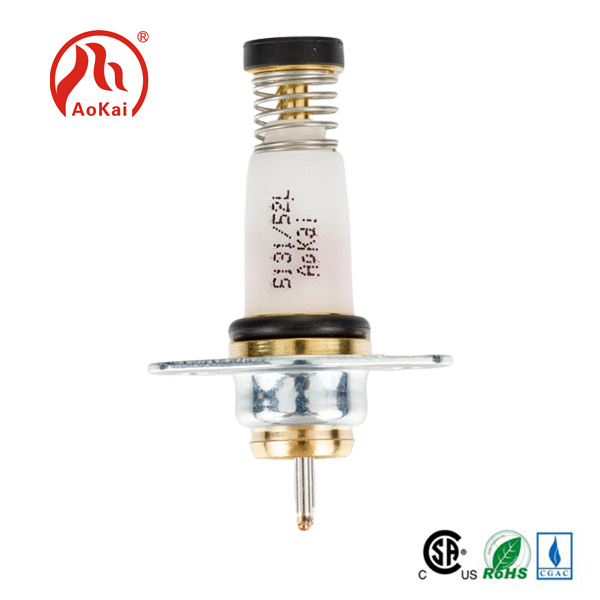Solenoid Valve: The Key to Efficient Fluid Control
2025-03-22
In the world of fluid and gas control systems, precision and reliability are paramount. One of the key components that make these systems efficient is the solenoid valve. These compact yet powerful devices play a vital role in regulating the flow of liquids, gases, and other substances. In this blog, we’ll take a closer look at solenoid valves, how they work, and why they are so important in modern industrial and commercial applications.
What is a Solenoid Valve?
A solenoid valve is an electromechanical device used to control the flow of fluid or gas in a system. It consists of a solenoid coil, which is an electromagnet, and a valve that opens or closes when the coil is energized. The valve can either be normally open (NO) or normally closed (NC), depending on the design and the application.
When electrical current passes through the solenoid coil, it generates a magnetic field that either pulls or pushes a plunger or diaphragm, opening or closing the valve. This mechanism allows for precise control of the flow of liquids or gases, making solenoid valves ideal for use in automation and process control systems.
How Do Solenoid Valves Work?
The operation of a solenoid valve is relatively simple but highly effective. The key to its functionality lies in the magnetic force generated by the solenoid coil. Here's how it works step-by-step:
1. Activation: When an electrical current is applied to the solenoid coil, it creates a magnetic field.
2. Movement: This magnetic field either attracts or repels a plunger, diaphragm, or piston within the valve, depending on the valve’s design.
3. Flow Control: The movement of the plunger or diaphragm opens or closes the valve, controlling the flow of fluid or gas in the system.
4. Deactivation: When the electrical current is turned off, the solenoid coil loses its magnetic field, and a spring or gravity causes the valve to return to its original position (either open or closed).
Types of Solenoid Valves
There are several types of solenoid valves, each designed for specific applications. Here are some of the most common types:
1. Direct-Acting Solenoid Valve: In this type, the solenoid coil directly actuates the valve without the need for external pressure. These valves are ideal for small flow rates and low-pressure applications.
2. Pilot-Operated Solenoid Valve: This valve uses pressure to assist in opening and closing the valve. The solenoid coil activates a pilot valve that controls the main valve. Pilot-operated solenoid valves are suitable for larger flow rates and higher pressures.
3. 2-Way Solenoid Valve: This valve has two ports: one for the inlet and one for the outlet. It can either allow or stop the flow of fluid or gas depending on its position. These valves are commonly used for simple on/off control.
4. 3-Way Solenoid Valve: A 3-way valve has three ports and can divert flow between two outlets. These valves are often used in systems that require more complex flow control, such as in pneumatic or hydraulic circuits.
5. 4-Way Solenoid Valve: A 4-way solenoid valve is typically used to control double-acting actuators in pneumatic systems. It has four ports and can direct airflow in multiple directions to control the movement of machinery.
Applications of Solenoid Valves
Solenoid valves are used in a wide range of applications across various industries due to their versatility and efficiency. Here are some common uses:
1. Automation Systems: In industrial automation, solenoid valves are used to control actuators, cylinders, and other equipment in processes such as assembly lines, packaging, and material handling.
2. Water Treatment: Solenoid valves are used in water treatment plants to regulate the flow of water, chemicals, and other liquids in filtration systems.
3. HVAC Systems: In heating, ventilation, and air conditioning (HVAC) systems, solenoid valves control the flow of refrigerants, water, and air to maintain proper temperatures and ventilation.
4. Agricultural Irrigation: Solenoid valves are employed in irrigation systems to control the flow of water to crops. They help automate the process, ensuring that water is distributed efficiently.
5. Medical Equipment: In medical applications, solenoid valves control the flow of gases in equipment like anesthesia machines, oxygen regulators, and ventilators.
6. Fuel Systems: Solenoid valves are used in fuel systems of vehicles and machinery to control the flow of fuel or air, ensuring optimal combustion.
7. Car Wash Systems: Many automated car wash systems use solenoid valves to control water, soap, and other chemicals during the washing process.
Benefits of Solenoid Valves
1. Efficiency: Solenoid valves offer quick and precise control over the flow of fluids or gases, ensuring that processes run smoothly and efficiently.
2. Durability: Made from high-quality materials such as stainless steel and brass, solenoid valves are built to withstand harsh environments and long-term use.
3. Automation: Solenoid valves can be easily integrated into automated systems, providing seamless control and reducing the need for manual intervention.
4. Space-Saving Design: These valves are compact and lightweight, making them ideal for applications where space is limited.
5. Cost-Effective: Compared to manual valves, solenoid valves are relatively affordable and require less maintenance, making them a cost-effective solution for many industries.
6. Versatility: Solenoid valves can be used in a wide range of applications, from small household appliances to large industrial systems.
Choosing the Right Solenoid Valve
When selecting a solenoid valve, several factors must be considered to ensure it meets the specific requirements of your system. Here are some key considerations:
1. Pressure and Flow Rate: Determine the pressure and flow rate requirements for your application. Different solenoid valves are designed to handle varying pressures and flow rates.
2. Voltage and Power Supply: Ensure the solenoid valve is compatible with the voltage and power supply in your system. Most solenoid valves are available in AC and DC configurations.
3. Valve Material: The material of the valve body should be selected based on the type of fluid or gas it will be controlling. For corrosive substances, stainless steel or specialized coatings may be necessary.
4. Response Time: The speed at which the valve opens and closes is important, especially in systems that require fast and precise control.
5. Size and Port Configuration: Choose a solenoid valve that fits your system’s size and port configuration requirements. Ensure the valve’s ports are compatible with the pipes or tubing used in your system.
Conclusion
Solenoid valves are essential components in a wide range of industries, offering precise control over fluid and gas flow. Their versatility, efficiency, and reliability make them ideal for both small-scale and large-scale applications. Whether used in automation, water treatment, HVAC systems, or medical equipment, solenoid valves play a critical role in ensuring smooth and efficient operation. By understanding how they work and the different types available, you can make an informed decision when selecting the right solenoid valve for your needs.



